Telemetry Prototype 1 Trial
Written by Alex MillsTowards the end of 2019 the software and hardware package had been ‘bench tested’ enough and proven ready for the first field trial at the southern farm near Eneabba in Western Australia.
The site selected for the trial had a submersible pump and two tanks, supplying troughs out in multiple paddocks nearby. The pump was powered by a 240VAC connection that we could also use, negating the need for a solar panel, batteries and regulator, making the trial a little simpler to begin with. With two tanks, we could trial the sonar level sensor on one and a camera watching a mechanical marker on the other.
The site was about 7km away from the base station with a few blocks of trees in the line of sight, though we were able to still maintain 140 Mbps (faster than NBN) throughput without any real height in the radios.
Prototype 1
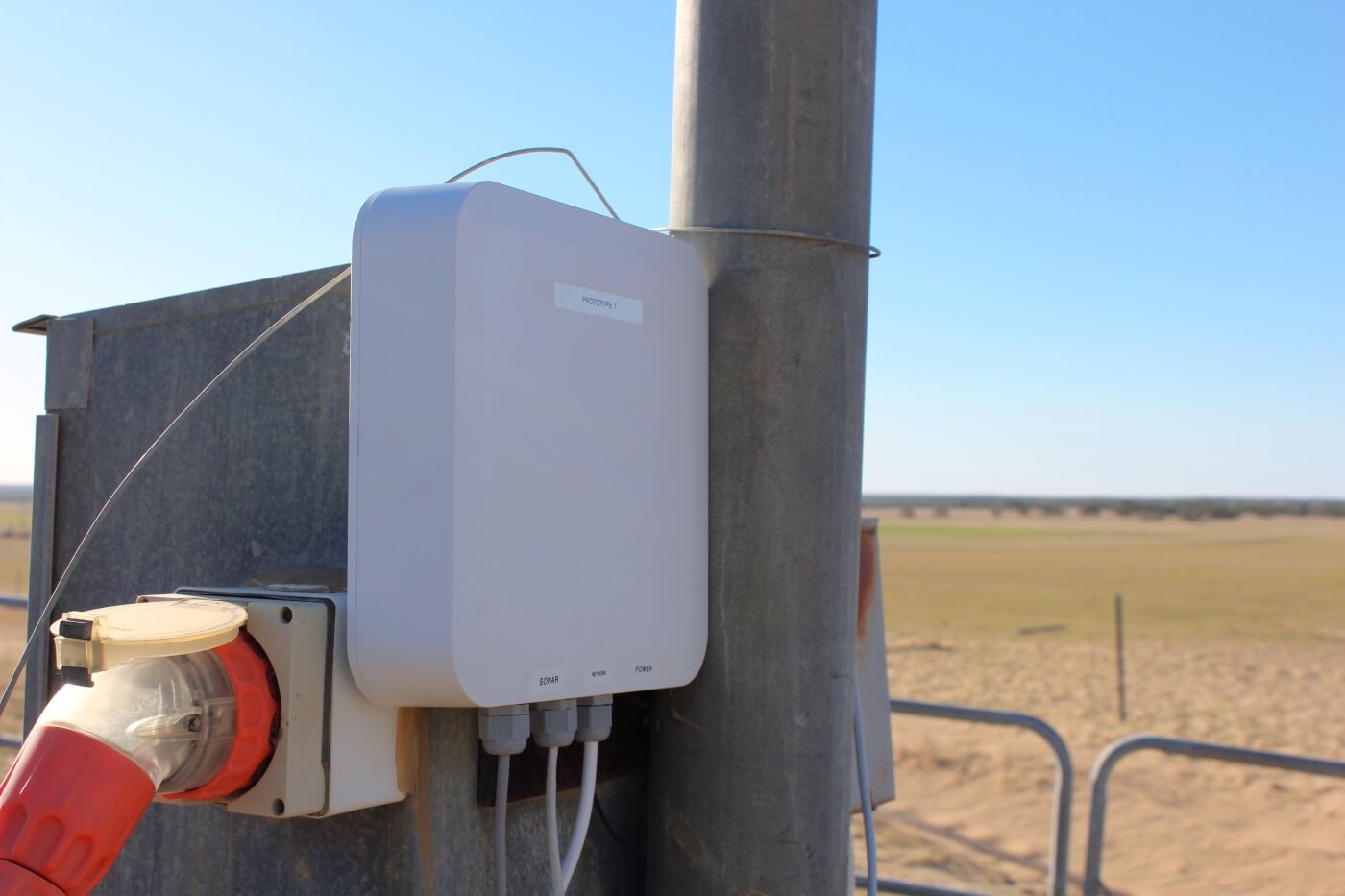
For the trial site, a NanoStation 5AC was selected due to its dual ethernet connectivity, allowing the camera to be connected and powered directly from it. Both are powered using the POE Injector connected to the 240V outlet.
The prototype contains the POE Injector, an Ethernet IO Interface, and a 12/5 VDC power supply to power the interface and the sonar. In a solar unit this would be replaced with a smaller 12 to 5 VDC regulator to power the sonar.
For expandability, the prototype has an additional analog voltage input, two digital inputs, two relay outputs, and two 2-wire sensors for temperature and humidity.

Sonar Sensor

The sonar selected is a MaxBotix unit tuned specifically for use in tank level sensing environments, with the ability to measure from 30cm to 5m with millimeter accuracy. While the units offer pulse-width and serial outputs, we took advantage of the simple analog voltage output and connected it into an ethernet IO interface. As the tank fills up, the voltage reduces, allowing the software to easily calculate percentage. The ethernet interface uses SNMP for communications so that’s the first protocol implemented. A Modbus interface could have been used in place as well.
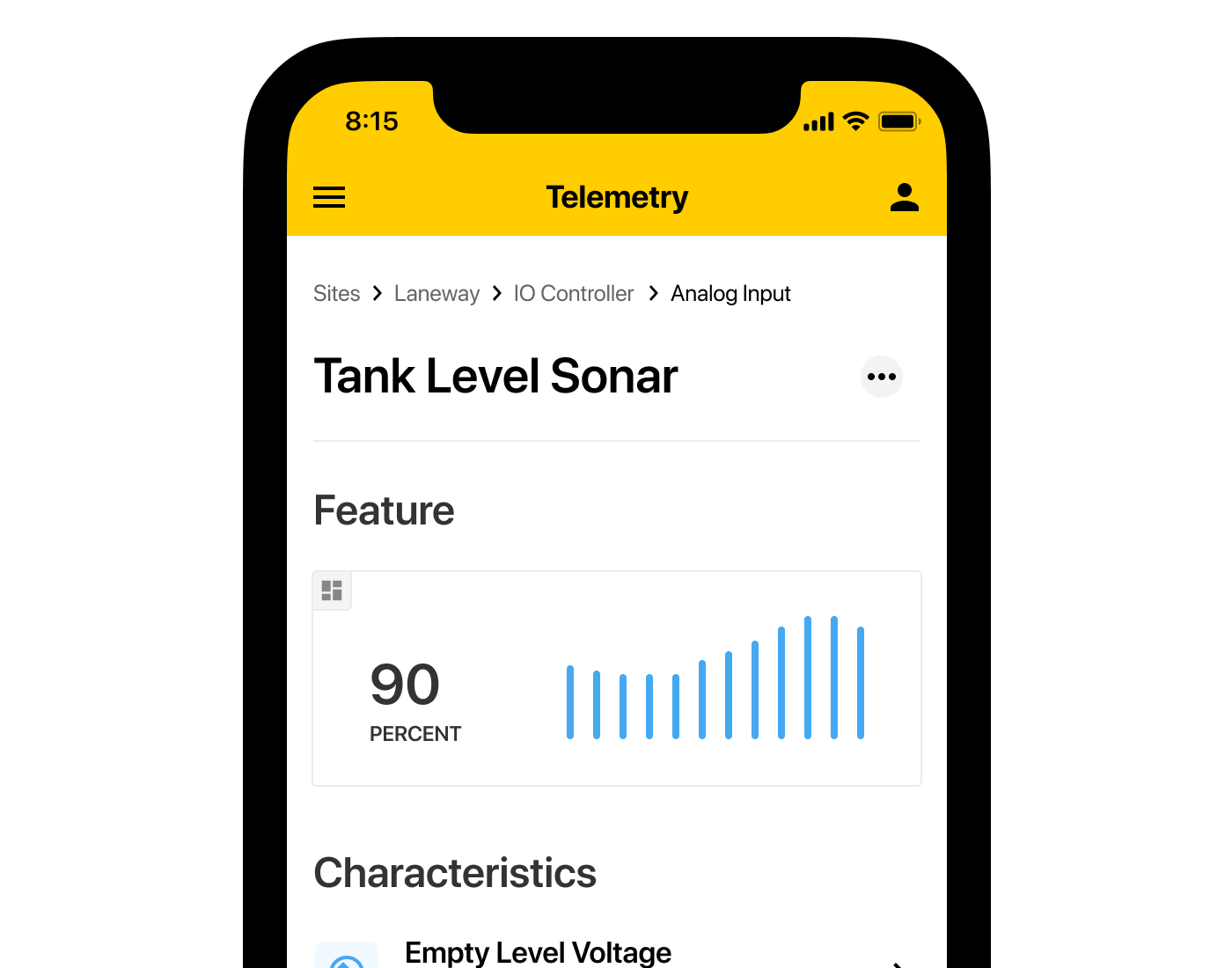
Outdoor Camera
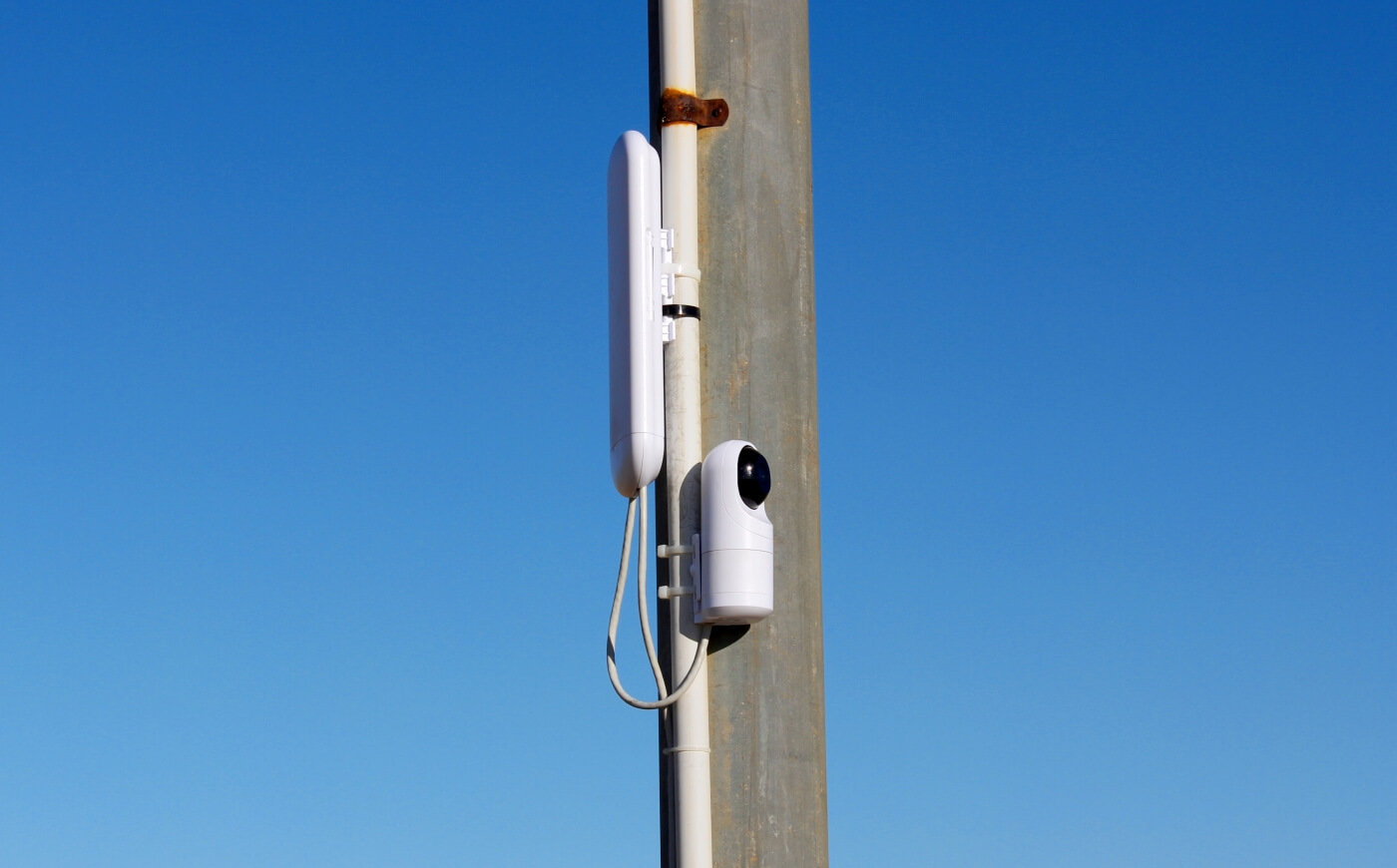
The G3 Flex is a great value for money camera that can be used inside or outside, featuring a 1080p sensor and infrared LEDs to help with night scenes. Powered with POE from the NanoStation radio, installation is very simple.
The camera can be run independently, providing an ability to stream video or supply an image capture when requested, the method we used in the initial version of the software. Additionally, the Ubiquiti security camera software can be installed on the base station (or on an Ubiquiti Cloud Key Gen2) which enables hot zones to trigger automatic video capture based on movement.
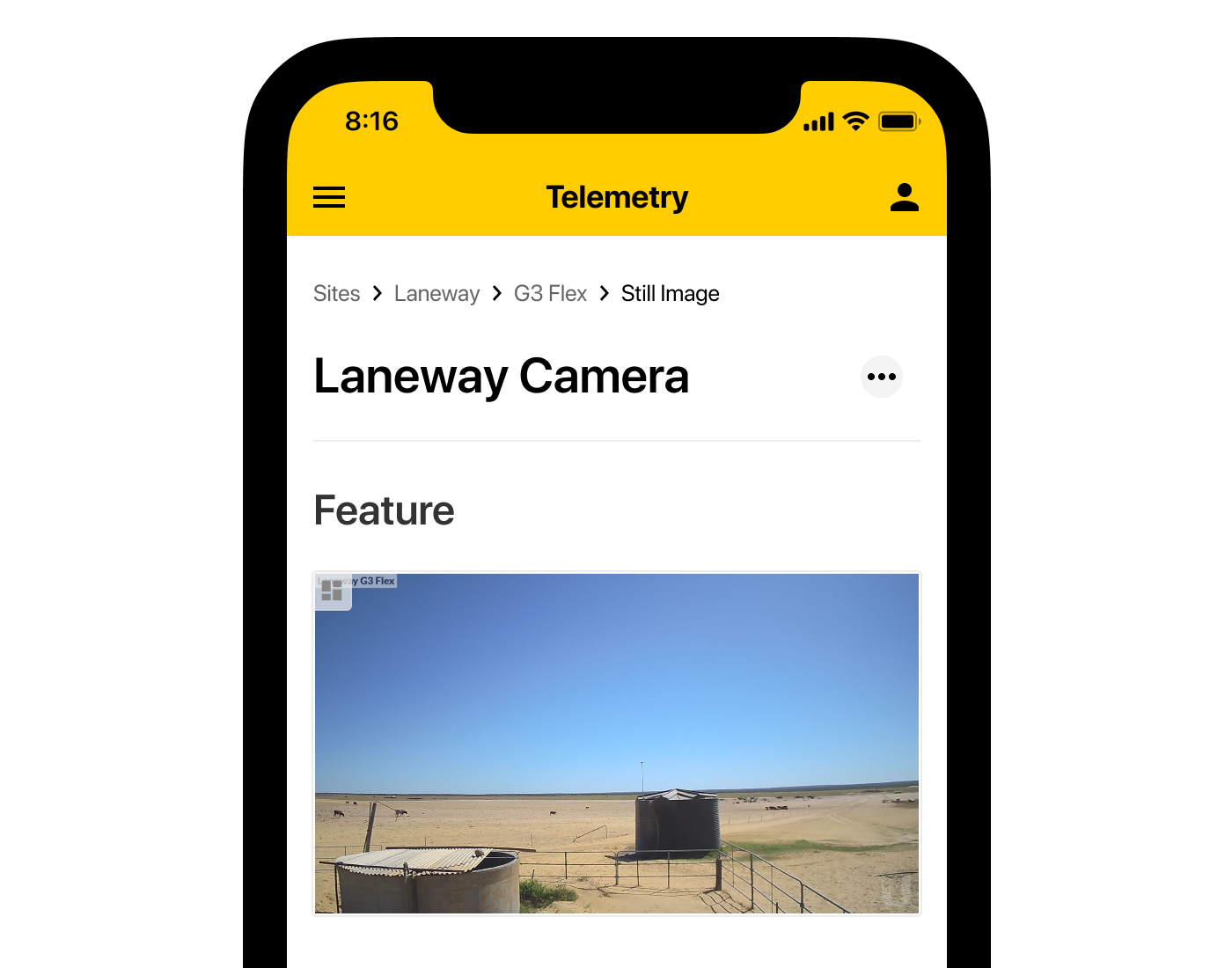
As demonstrated below, day and night performance are very reasonable for a ~$100 camera. A piece of reflective tape on the level marker reflects the IR LEDs, making it very easy to see.
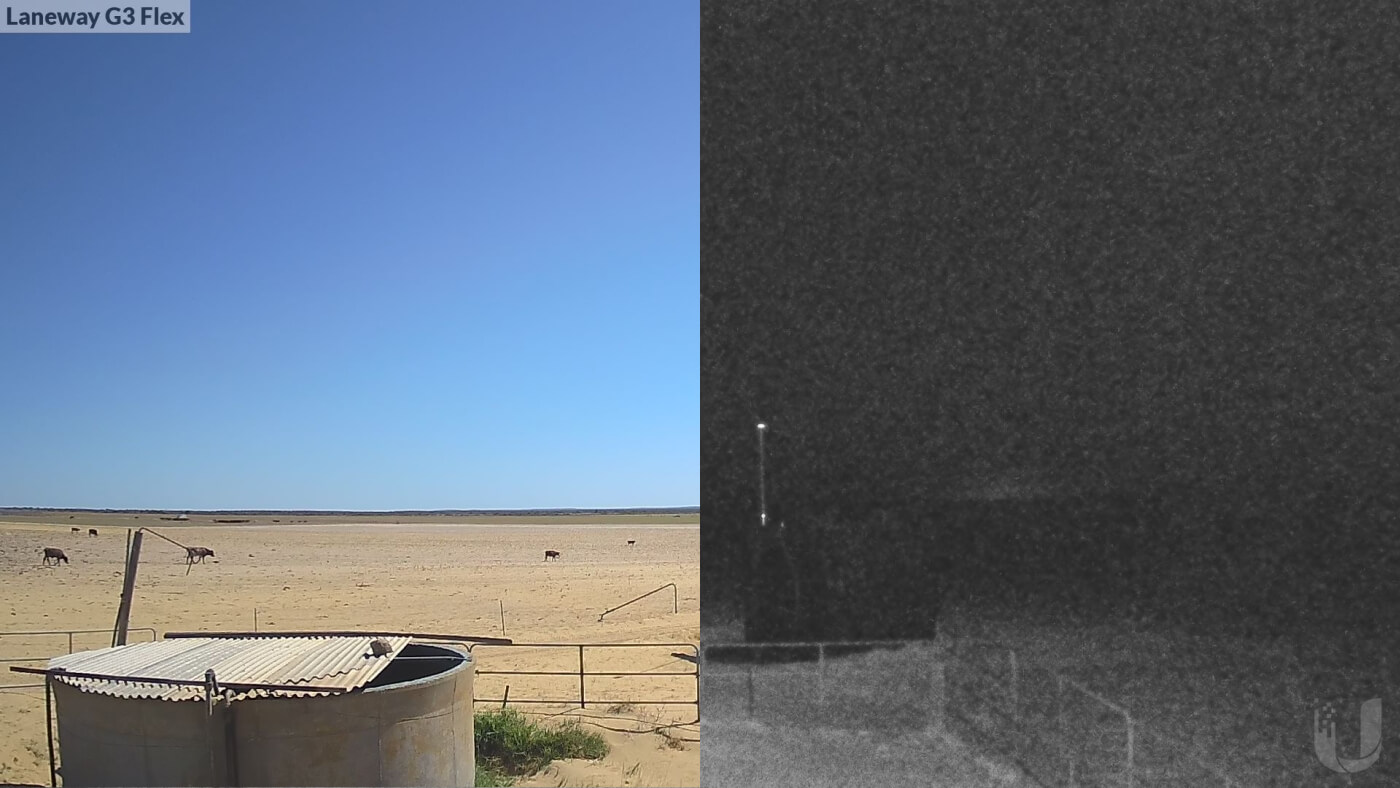
Base Station

The base station AirMax radio, a LiteAP AC, providing 120 degrees of coverage was mounted to the verandah of the homestead facing the trial site. For a production site, the 360-degree omni antenna and Rocket radio would be the preferred setup. Ubiquiti was selected due to their performance and value, with a field-proven product to meet any requirement.
In the future the base station software will run on a little fan-less computer but for the trial, was simply running on a Windows 10 development PC. Built with C# on .NET Core, the software is portable enough to run on Windows, Linux and Mac OS if required. The client software is a mobile-responsive Ember app deployed as a Progressive Web App.
Result
The test was very successful, verifying all the hardware and radios can handle high 40 degree heat with ease and no issues. When the camera is managed by the security software, bugs attracted to the IR LEDs can trigger automatic recording without sensor tuning. The trial was only for a few weeks so usual ethernet cable and a basic plastic case was used, though even in the short time the birds and sun had serious impacts. Always use outdoor cable like Ubiquiti ToughCable and metal enclosures are a necessity.
Also, animals do weird things at night.